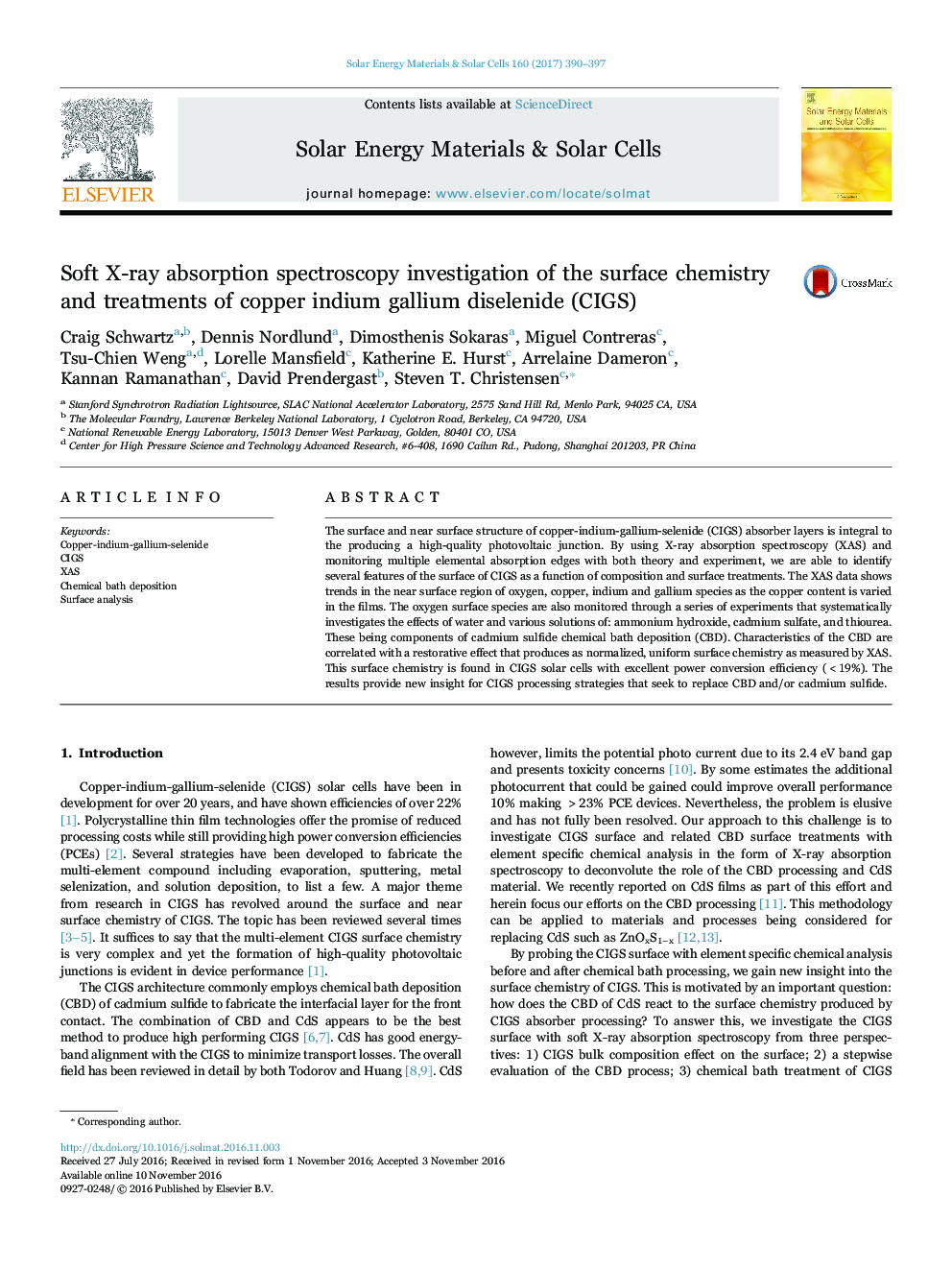| Article ID | Journal | Published Year | Pages | File Type |
|---|---|---|---|---|
| 6457373 | Solar Energy Materials and Solar Cells | 2017 | 8 Pages |
•Solution processing of CIGS surface produces a common chemical structure.•Solution processing removes oxidation, contamination, and damage to the CIGS surface.•High efficincy CIGS films exhibit the most well-defined surface chemical structure.
The surface and near surface structure of copper-indium-gallium-selenide (CIGS) absorber layers is integral to the producing a high-quality photovoltaic junction. By using X-ray absorption spectroscopy (XAS) and monitoring multiple elemental absorption edges with both theory and experiment, we are able to identify several features of the surface of CIGS as a function of composition and surface treatments. The XAS data shows trends in the near surface region of oxygen, copper, indium and gallium species as the copper content is varied in the films. The oxygen surface species are also monitored through a series of experiments that systematically investigates the effects of water and various solutions of: ammonium hydroxide, cadmium sulfate, and thiourea. These being components of cadmium sulfide chemical bath deposition (CBD). Characteristics of the CBD are correlated with a restorative effect that produces as normalized, uniform surface chemistry as measured by XAS. This surface chemistry is found in CIGS solar cells with excellent power conversion efficiency (<19%). The results provide new insight for CIGS processing strategies that seek to replace CBD and/or cadmium sulfide.
